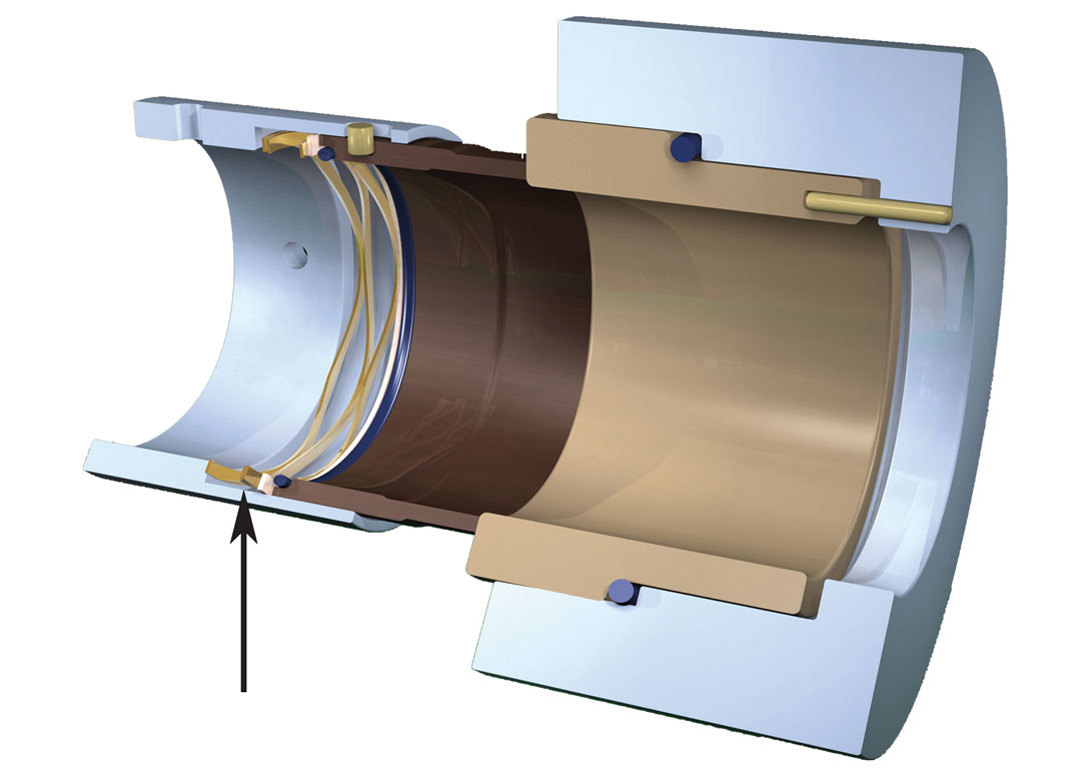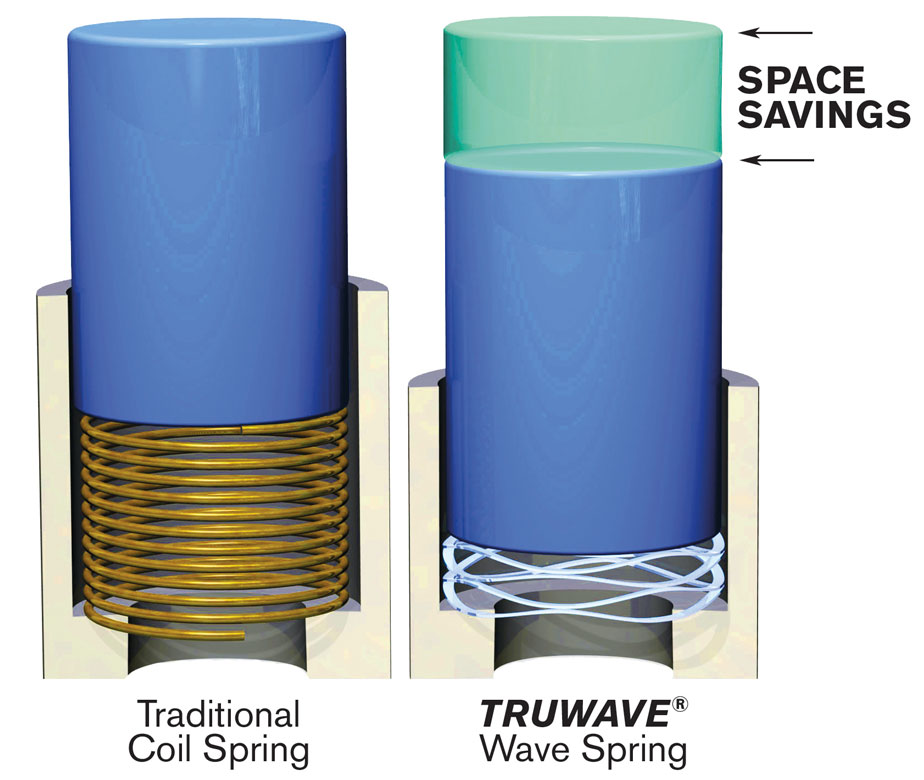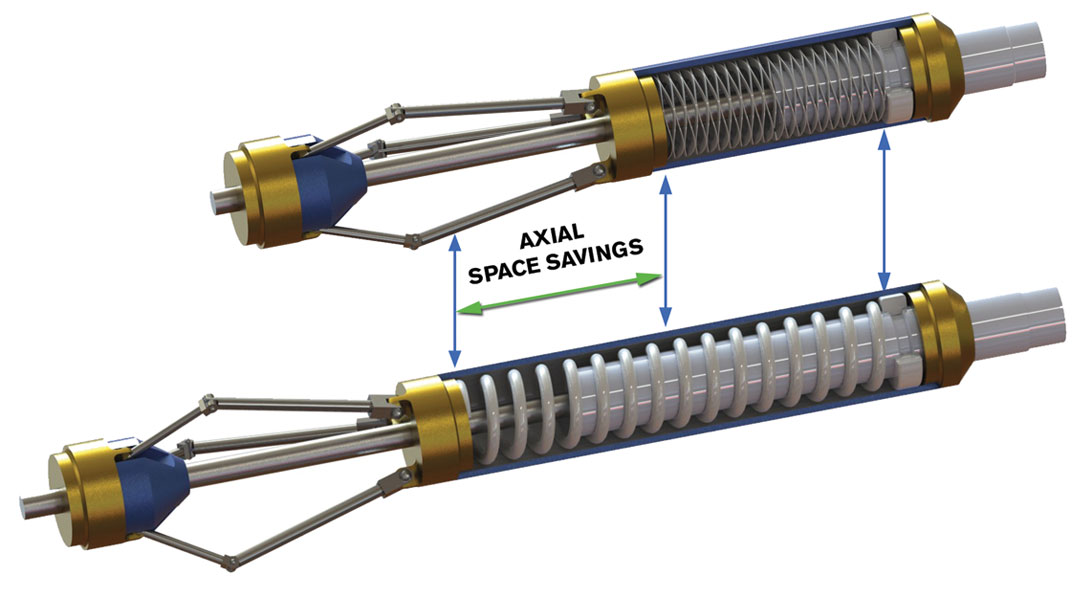
By Rotor Clip
Axial space savings are perhaps the most visible feature of wave springs when compared side by side with other spring designs. For example, in static applications, wave springs typically require only half of the work height of equivalent coil springs.
This work height advantage falls to roughly one third in dynamic applications, due to the need for more turns to handle the bending stresses of a dynamic application. In either case, single and multi-turn wave springs offer significant space savings over coil and disc designs. Consider that just one multi-turn wave spring can replace multiple coil springs in a traditional seal design. In addition, wave springs can save radial space compared to using disc and coil springs with larger diameters. Here are a few examples where space constraints are easily satisfied by specifying wave springs:
Mechanical seals:
These ubiquitous components are often used for sealing rotating shafts against stationary housing in equipment such as pumps and agitators. Sliding components are pressed against each other by force commonly generated by coil springs, which prevent the seal from opening on its own. In a wide range of seal applications, wave springs offer several benefits over coil springs. Beyond space savings, no additional holes are required in the seal housing to make room for wave springs. As a result, less machining is needed.
Another benefit is that wave springs can only compress axially, which means that no torsional loads are generated. In contrast, coil springs suffer from torsional loads that can cause preloaded components to rotate during use and lead to excessive wear and a decreased working load. A very low spring rate with an extremely flat load deflection curve can be achieved by using a multi-turn wave spring to prolong the life of a mechanical seal. Compared to disc springs that can cause massive wear due to edge contact, wave springs feature wide radial walls plus shim ends to offer a large supporting surface. Construction details are another edge: Wave springs are made from one piece of wire, so multiple springs are not necessary. Furthermore, wave springs have no welding points that can break off during dynamic stress – a common occurrence with welded and stamped washers. For seals that require corrosion resistance, stainless steel and other materials such as hastelloy C276 may be specified.
Incorporating wave springs into downhole tools saves significant axial space compared to traditional coil springs.

Downhole tools:
Spiral wound, multi-turn wave springs can be used to preload the anchoring devices of downhole tools used to bite into the casing bore once the tool has been actuated. After the anchoring device has a good bite in the casing, a load must be applied to the heel of the slips to keep them from de-energising due to motions that occur during applied loads to the tool.
Coil springs are traditionally used to apply this load, but multi-turn wave springs with crest-to-trough designs are a better alternative in many cases. Significant axial space can be saved by specifying wave springs, leading to more compact tool designs and reduced material costs. Besides the space savings, wave springs provide a more consistent load during the required travel versus conventional coil springs. Alloys such as inconel and elgiloy are available as wave spring materials for environments that encounter high temperatures and corrosive elements.


Having spent a decade in the fastener industry experiencing every facet – from steel mills, fastener manufacturers, wholesalers, distributors, as well as machinery builders and plating + coating companies, Claire has developed an in-depth knowledge of all things fasteners.
Alongside visiting numerous companies, exhibitions and conferences around the world, Claire has also interviewed high profile figures – focusing on key topics impacting the sector and making sure readers stay up to date with the latest developments within the industry.





